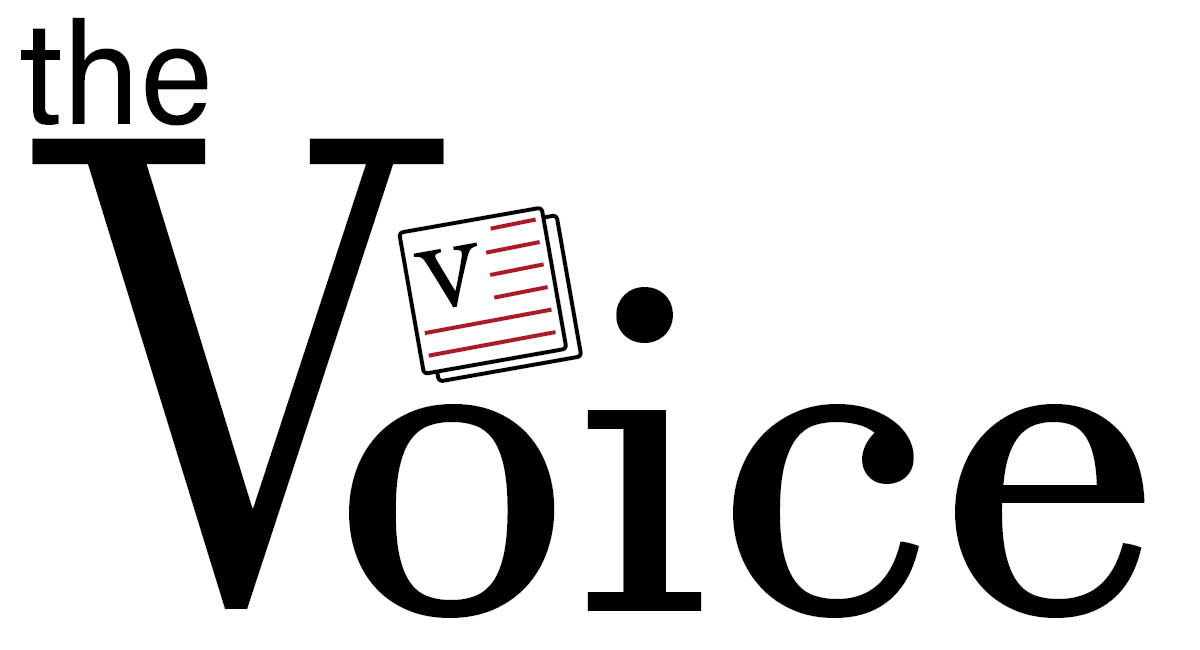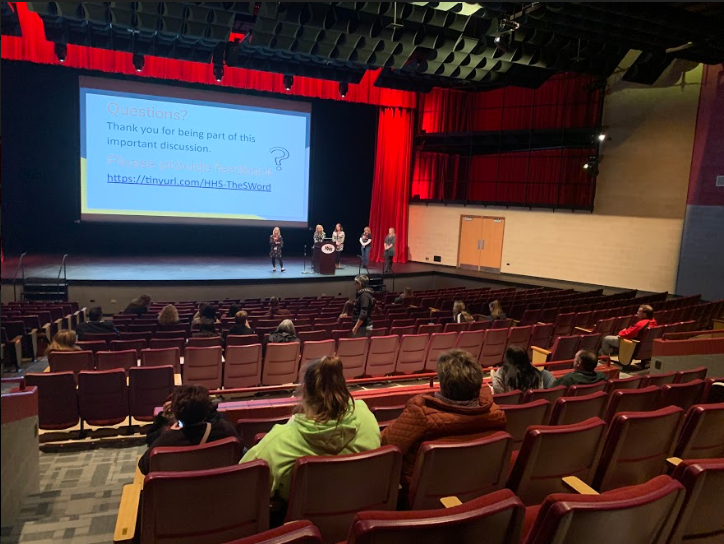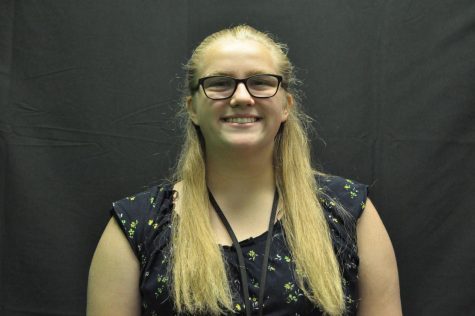The “S” word: the word we are all afraid of saying
November 7, 2019
On Nov. 5, pulling into Huntley High School at 6:35 p.m. for the showing of the film “The S Word,” one could see there were not many cars in the parking lot. There were maybe 20 cars and at least eight of them were faculty required to be there.
It was quite early, as the film started at 7 p.m., yet there was another car that came just as early. In the driver’s seat sat a woman who was probably there to pick up her grandchild rather than coming to see “The S Word.”
Principal Marcus Belin, social workers of the school, PBIS member Anne Sharkey, and some students in the Service and Action class greeted the incoming audience. They were handing out pamphlets, answering questions, and listening to stories from the people arriving.
Minutes later, Rose Hamann walked in, the woman who was inside her car. Hamann walked in slowly and curiously. She took a seat in the center of the back row on the main level. While others appeared to be arriving in pairs, she sat alone.
“My son died of suicide,” Hamann said. “I think it’s important [that the film is being shown.] They’ve got to get [the students] educated.”
The film “The S Word” is a documentary explicitly telling the stories of nine people who experienced suicidal thoughts or took care of someone who did. It is their stories of why they felt the way they did and how they found hope. After the first story was coming to a close, Hamann sat captivated as her eyes glazed over.
“Suicide is a topic that is not talked about often. That’s why the film is called ‘The S Word,’ because no one says it,” Sharkey said.
The documentary proved to be a heartwrenching and emotional experience that discussed beliefs and facts about suicide. Audience members who previously struggled with suicide found it relatable and accurate.
It related to uneducated viewers as well by bringing up famous deaths like Robin Williams and known ideas of suicide being thought of as “selfish.” It expands on those ideals and broadens the understanding that suicidal feelings cannot disappear easily.
Although that hour-and-a-half in the PAC was educational, not many people in the community experienced it. Only 43 people came to the showing and unfortunately only seven of them were students.
Earlier that Tuesday in school, the film was promoted to students for the evening and was also displayed on the screens in the cafeteria, which leaves the question: why were students not attending?
When asked, most students simply seemed to be busy. Some had practice for sports, others had work, and a few people had tests the following day. There was an agreement among the students interviewed during the week: there just wasn’t enough time. However, a different factor was brought up by an audience member: students are so desensitized to suicide that they just don’t care any more.
The goal of the PBIS team was to bring awareness to a topic that they felt needed to be talked about more. This shows how big barrier between the team and their target audience really is.
Despite the low number of viewers, the faculty was still content with the outcome.
“If we can save one life then that makes this all worth it, but having more people would [have been] nice,” Belin said.




